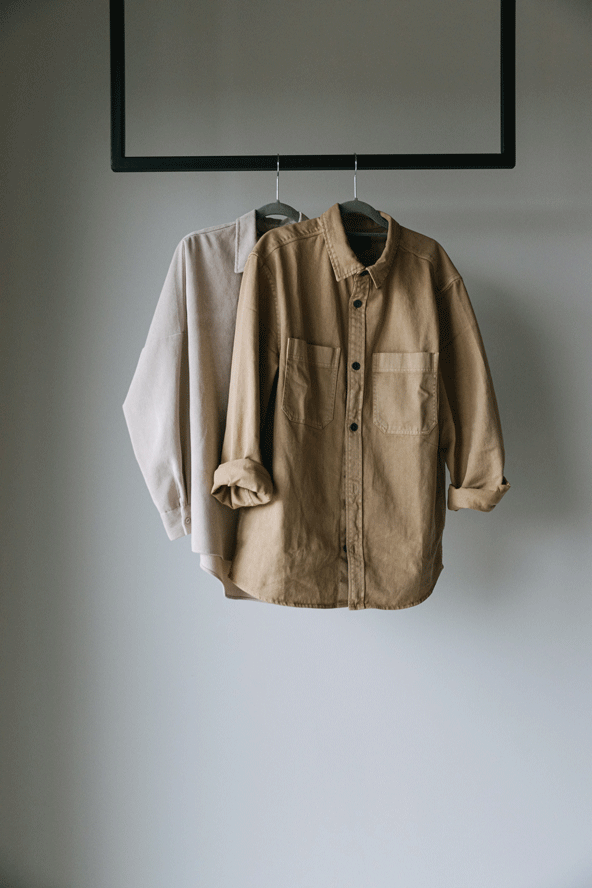Layering is an effective strategy for adapting to changing external conditions, making it easy for you to add or remove your clothes as needed. This, in turn, allows you to have a greater sense of control over your body temperature. The concept of layering works by trapping and insulating air between each layer. The trapped air, then, creates a barrier that helps retain body heat in colder conditions and allows heat dissipation in warmer weather. Layering clothes, in short, is a tried-and-tested approach for adapting to unpredictable or fluctuating weather.
Here are some guidelines to consider when layering clothes and accessories for optimal comfort and adaptability:
Choose a Moisture-Wicking Base Layer
A well-layered set of clothes starts with a moisture-wicking base that acts as the foundation for comfort. Fabrics like polyester or merino wool—materials that efficiently draw moisture away from the skin—can help keep you dry and prevent that uncomfortable clammy feeling. Consider starting your layer of clothes with a seamless, moisture-wicking base beneath a casual shirt. This offers a clean, stylish look as well as ensures that your body stays dry. With a moisture-wicking base on, you’ll have an easier time regulating temperature throughout the day.
Add an Insulating Layer for Warmth
If you’re dressing up for colder conditions, keep yourself warm by adding an insulating layer that traps heat close to your body. This layer can take on the form of a fleece or down jacket that offers excellent insulation without adding unnecessary bulk. How about slipping into a sleek down jacket before you put on your favorite coat? Do the same for your bottoms by wearing knee-high hosiery underneath your dress and boots. Such additions to your outfit not only complement your style but also provide you with an extra layer of coziness, allowing you to tackle chilly temperatures with ease and confidence.
Embrace a Windproof and Waterproof Outer Layer
Shield yourself from the elements by using an outer layer that is both windproof and waterproof. Look for a stylish shell, such as a jacket with breathable membranes, to prevent overheating. If you’re planning to go out and it looks like it might rain, don a sleek rain jacket with adjustable cuffs and vents. The jacket adds a touch of fashion to your look and ensures that you stay dry and comfortable, even when unexpected showers come your way. The windproof feature of the outer shell further enhances your protection and prevents you from being affected by wind chill.
Personalize Your Look with Versatile Accessories
No one said you always need to sacrifice your sense of style to protect yourself from the elements. You can always elevate your layered look by personalizing it with accessories. Use versatile accessories such as scarves, hats, and gloves that add flair while offering practicality. If your jackets are mostly solid colors, for instance, you can use a patterned scarf to introduce a pop of color to a neutral-toned outfit. A well-chosen hat, meanwhile, can keep you warm and also serve as a fashion statement.
Ensure Adjustability for Climate Control
If you’re anticipating unpredictable weather while you’re out, make sure to select clothing with adjustable features such as zippered vents, cuffs, and hoods. These features allow you to effortlessly adapt to changing temperatures throughout the day. Wearing a versatile jacket with zippered vents that you can open during a brisk morning and close up as the day warms up is a smart choice, especially if the temperature in your area tends to change rapidly.
Focus on Proper Fit for Comfort
Achieve both style and comfort by focusing on a proper fit for each layer. Avoid overly tight or loose clothing, as this can compromise the layering’s effectiveness. Consider trying out a well-fitted thermal layer beneath a tailored sweater. A combination like this can effortlessly maintain a streamlined and polished appearance, and the layers can work together seamlessly to offer optimal insulation and freedom of movement.
Prioritize Footwear with Functionality
Your feet also need to be properly insulated. It makes sense, then, to choose footwear that combines style with functionality. Adding waterproof and insulated boots to your ensemble will provide you with adequate protection against the elements while keeping your look on point. How about wearing stylish ankle boots with a waterproof finish that seamlessly pair with your layered outfit? These boots can effectively keep your feet warm and dry while making you look good at the same time.
Test Your Layering System in Real Conditions
Ensure the effectiveness of your layering system by testing it in various real-world conditions. Take your ensemble for a spin in different weather scenarios to fine-tune your clothing choices based on practical experiences. Try strolling through a crisp autumn day or navigating a sudden downpour as you wear your outdoor attire. By exposing your layered outfit to diverse conditions, you can identify any adjustments that you need to make in the face of similar situations in the future.
Embrace Breathable Fabrics for Active Days
Aside from being great for unpredictable or changing weather, layered outfits can also be quite useful for days when you have to travel or move around a lot. If you’re planning to run a lot of errands or exercise, opt for materials that facilitate moisture management, such as lightweight merino wool or technical fabrics.
It might also be a smart idea to go for a breathable, moisture-wicking shirt and a lightweight insulated jacket for a day of hiking or outdoor activities. This combination ensures that you stay comfortable and dry, even as your activity level fluctuates.
Layering your clothes is an effective strategy when you’re looking forward to shifting temperatures, changing seasons, or trips to places with diverse climates. Keep the above mentioned guidelines in mind when you’re planning to layer your own clothes to ensure that you can achieve a balance of comfort and style no matter the weather.



